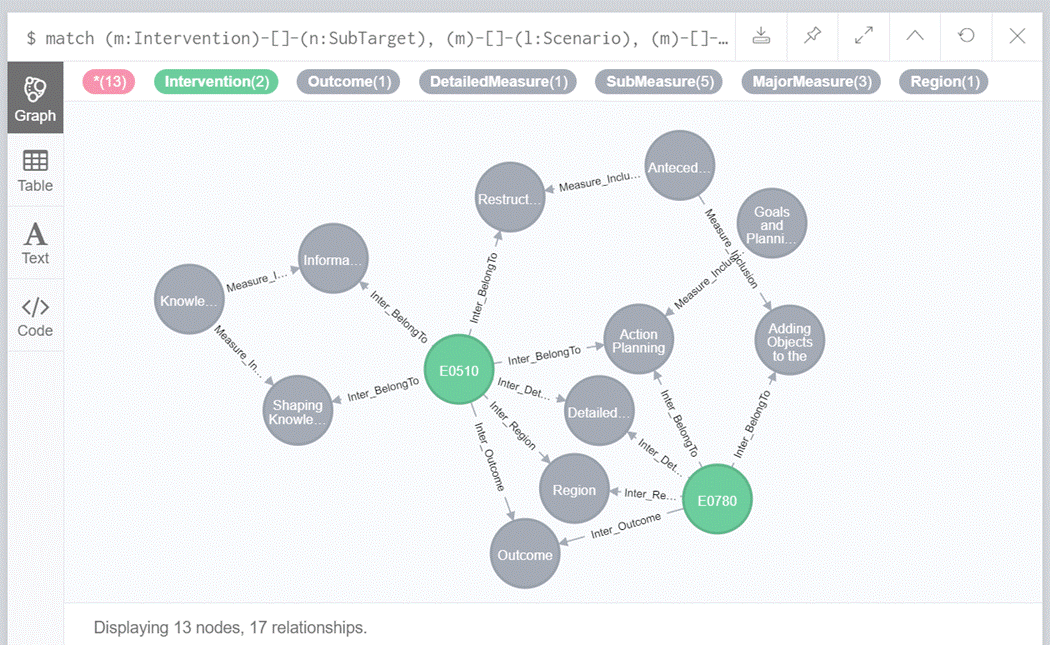Readme
File for Operating the Neo4J Database Constructed in the Paper: Evidence-Based
Practice in Sustainable Travel Behavior Intervention: A Knowledge Graph-Based
Systematic Review
0.
Related paper:
The paper Evidence-Based Practice in Sustainable Travel
Behavior Intervention is available here
or here
with open access.
Supplementary data
is available here.
1.
The address of the database:
The Neo4J database
constructed in the paper: Evidence-Based Practice in Sustainable Travel
Behavior Intervention: A Knowledge Graph-Based Systematic Review is
available at http://47.100.202.56:7474/browser/
without authentication.

2.
A glance of the structure of the database:
Entities (or
nodes) and relations (or relationships) of the database, two main concepts of knowledge
graph, are available by pressing the "Database" button.
The construction
of the database is the same as Table 1 in
the paper.

3.
Guide to search the evidence stored in the database:
Evidence stored in
the database can be searched by entering CQL (Cypher Query Language) commands
in the search box.
As the main and
central entity is number of evidence, the searching strategy should be based on
number of evidence ("E00**"). For example, if we are searching
evidence number 20, we can enter the CQL command as "match r=(n:Intervention)-[]-() where
n.ID="E0020" return *", where the key of number of evidence
(or Intervention) is "ID".

And the search
yields everything regarding evidence number 20, while some details are
available by activating the relationship arrow.

4.
Advanced search strategy:
The database
enables advanced search strategy mainly for decision-making. For example, if
decision supporters are searching for evidence. Searching criteria includes:
(1) scenario is school intervention, (2) target is to lower car usage
proportion, (3) decision supporters value only high or moderate level of
evidence as reliable. In this case, the searching strategy can be expressed as
"match (m:Intervention)-[]-(n:SubTarget), (m)-[]-(l:Scenario),
(m)-[]-(p:GRADE_Level) where n.ID="Car
Proportion" and l.ID="School Interventions" and
(p.ID="high" or p.ID="moderate") with m as mm match
(mm)-[]-(q:Outcome), (mm)-[]-(r:DetailedMeasure),
(mm)-[]-(s:SubMeasure)-[]-(t:MajorMeasure),
(mm)-[]-(u:Region) return *".

And the search
yields two pieces of evidence that satisfy the requirements of decision
supporters.

5.
Instructions of CQL (Cypher Query Language) commands:
Basic knowledge
regarding CQL commands can be found at https://neo4j.com/docs/cypher-manual/current/introduction/.